History
Ananias "Nyas" Berry (August 18, 1913 – October 5, 1951) and James Berry (c. 1915 – 1969) were born to Ananias Berry and Redna Berry in New Orleans. As early as 1919 the two brothers already performed in Chicago and then in Denver where the family settled and the younger Warren (December 25, 1922 – August 10, 1996) was born. [2]
In 1924 the family moved to Los Angeles, where as child actors Nyas, James and then Warren appeared in several films.
In 1929 Nyas and James formed the dance duo "The Berry Brothers." They appeared with Duke Ellington in "Rhythmania" at the Cotton Club. That same year they traveled to London and were featured performers in the critically acclaimed all-African-American revue Blackbirds of 1928 . They were the first African American act at the Copacabana in 1929. They appeared in the musical "Rhapsody In Black" in 1931. [3]
The act supported the entire family and their father Ananias was upset when 19-year-old Nyas left the act in 1932 to marry 27-year-old Valaida Snow, a popular African-American entertainer. Ananias replaced him with Warren. Ananias disapproved that his son married a woman eight years older so he investigated Valaida. He discovered she had been previously married to Knappy Brown, and they hadn't divorced. This caused a scandal in the press until Valaida provided documents that she had divorced Brown, but Nyas and Valaida split up shortly after. [4] When Nyas' marriage had dissolved in 1935 he talked his brothers into forming a Berry Brothers act consisting of the trio. [3]
In 1938, at the Cotton Club there was a legendary dance face-off between the Nicholas Brothers and the Berry Brothers. By some accounts the Berry Brothers were more athletic but the Nicholas Brothers were better overall performers – better at pleasing the crowd. [5]
At the peak of their success, in the 1940s, the Berry Brothers also performed their routines in some Hollywood movies. They appeared twice in Panama Hattie (1942), once solo and once accompanying singer Lena Horne.
The experience of the Berry Brothers came to a sudden end when Nyas died in 1951 of heart failure.
James and Warren continued to perform together or individually for a few more years. James died in 1969, and Warren in 1996 after working for over 15 years as a film editor. [6]

Cabell Calloway III was an American jazz singer and bandleader. He was a regular performer at the Cotton Club in Harlem, where he became a popular vocalist of the swing era. His niche of mixing jazz and vaudeville won him acclaim during a career that spanned over 65 years.

Henry Sterling Creamer was a popular song lyricist and theater producer. He was born in Richmond, Virginia, and died in New York. He co-wrote many popular songs in the years from 1900 to 1929, often collaborating with Turner Layton, with whom he also appeared in vaudeville. He was African American.

Bill Robinson, nicknamed Bojangles, was an American tap dancer, actor, and singer, the best known and the most highly paid Black entertainer in the United States during the first half of the 20th century. His long career mirrored changes in American entertainment tastes and technology. His career began in the age of minstrel shows and moved to vaudeville, Broadway theatre, the recording industry, Hollywood films, radio, and television.

Panama Hattie is a 1940 American musical with music and lyrics by Cole Porter and book by Herbert Fields and B. G. DeSylva. The musical is about a nightclub owner, Hattie Maloney, who lives in the Panama Canal Zone and ends up dealing with both romantic and military intrigue. The title is a play on words, referring to the popular Panama hat.
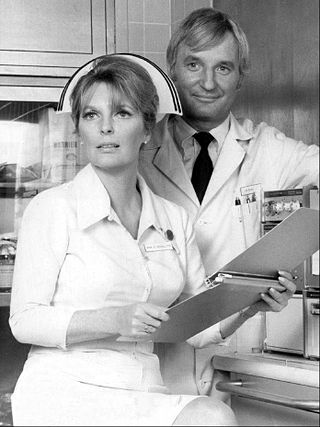
Robert William Troup Jr. was an American actor, jazz pianist, singer, and songwriter. He wrote the song "Route 66" and acted in the role of Dr. Joe Early with his wife Julie London in the television program Emergency! in the 1970s.
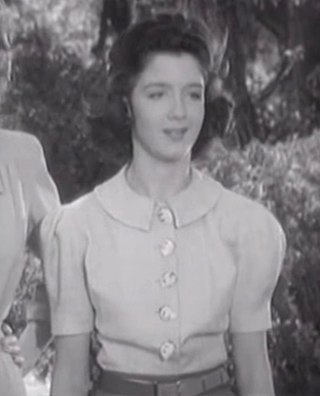
Margaret O'Rene Ryan was an American dancer and actress, best known for starring in a series of movie musicals at Universal Pictures with Donald O'Connor and Gloria Jean.
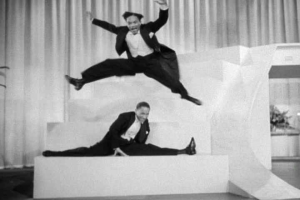
The Nicholas Brothers were an entertainment act composed of brothers, Fayard (1914–2006) and Harold (1921–2000), who excelled in a variety of dance techniques, primarily between the 1930s and 1950s. Best known for their unique interpretation of a highly acrobatic technique known as "flash dancing", they were also considered by many to be the greatest tap dancers of their day, if not all time. Their virtuoso performance in the musical number "Jumpin' Jive" featured in the 1943 movie Stormy Weather has been praised as one of the greatest dance routines ever captured on film.

Harold Lloyd Nicholas was an American dancer specializing in tap. Nicholas was the younger half of the tap-dancing pair the Nicholas Brothers, known as two of the world's greatest dancers. His older brother was Fayard Nicholas. Nicholas was featured in such musicals as An All-Colored Vaudeville Show (1935), Stormy Weather (1943), The Pirate (1948), and The Five Heartbeats (1991).

Valaida Snow was an American jazz musician and entertainer who performed internationally. She was also known as "Little Louis" and "Queen of the Trumpet," a nickname given to her by W. C. Handy.
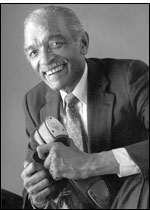
Charles "Honi" Coles was an American actor and tap dancer, who was inducted posthumously into the American Tap Dance Hall of Fame in 2003. He had a distinctive personal style that required technical precision, high-speed tapping, and a close-to-the-floor style where "the legs and feet did the work". Coles was also half of the professional tap dancing duo Coles and Atkins, whose specialty was performing with elegant style through various tap steps such as "swing dance", "over the top", "bebop", "buck and wing", and "slow drag".

Marilyn Miller was one of the most popular Broadway musical stars of the 1920s and early 1930s. She was an accomplished tap dancer, singer and actress, and the combination of these talents endeared her to audiences. On stage, she usually played rags-to-riches Cinderella characters who lived happily ever after. Her enormous popularity and famed image were in distinct contrast to her personal life, which was marred by disappointment, tragedy, frequent illness, and ultimately her sudden death due to complications of nasal surgery at age 37.
The Four Step Brothers were an African-American dance group. The group started out as a trio in 1925, with the original members, Maceo Anderson, Al Williams and Red Walker. Although their original name was the Step Brothers, because that was also the name of another famous young tap dancing quartet, they subsequently changed their name to "The Three Step Brothers." In 1927, after accepting a new member, Sherman Robinson, they became The Four Step Brothers. Dubbed "The Eight Feet of Rhythm," the group soon traveled with Duke Ellington. While starring with the "Brothers," Anderson also appeared at the Hoofers Club and worked part-time as a newsboy.

Maurice Robert Hines Jr. was an American actor, director, singer, and choreographer. He was the older brother of dancer Gregory Hines.

Jeni LeGon, also credited as Jeni Le Gon, was an American dancer, dance instructor, and actress. She was one of the first African-American women to establish a solo career in tap dance.
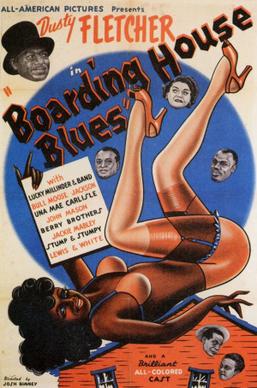
Boarding House Blues is a 1948 American musical race film directed by Josh Binney which featured the first starring film role by Moms Mabley. It was the penultimate feature film of All-American News, a company that made newsreels for black Americans.
Jimmy Mordecai also known as James Mordecai was a Harlem-based jazz tap dancer in the 1920s and 1930s. He featured in the 1929 short film St. Louis Blues starred in the 1930 Vitaphone Varieties musical short film Yarmekraw based on James P. Johnson's song of the same name.

Panama Hattie is a 1942 American film based upon the Broadway musical of the same name. It was produced by Arthur Freed and directed by Norman Z. McLeod.
The Cotton Club Boys were African American chorus line entertainers who, from 1934, performed class act dance routines in musical revues produced by the Cotton Club until 1940, when the club closed, then as part of Cab Calloway's revue on tour through 1942.
Tip, Tap, and Toe were a seminal African-American tap-dance comedy act that began in the late 1920s and appeared in several motion pictures in the 1930s and '40s. Its original members were Sammy Green, Teddy Frazier, and Raymond Winfield. At times it included Freddie James and Prince Spencer, also a member of The Four Step Brothers. They worked for Eddie Cantor at Palace Theatre in New York and performed on their own at the Paramount Theatre, and were in George White's Scandals of 1936 and the Cotton Club Review. African-Americans were not allowed to star in major motion pictures in the 1930s and '40s, but specialty acts, such as Tip, Tap, and Toe, were permitted, and the group appeared in at least five major Hollywood films during that time.
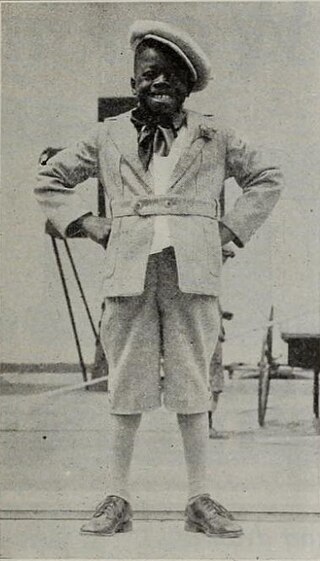
James Berry, also known as Bubbles, was an American actor and dancer. He featured in several silent films as a child, and starred in the Berry Brothers dance duo alongside his brothers.















